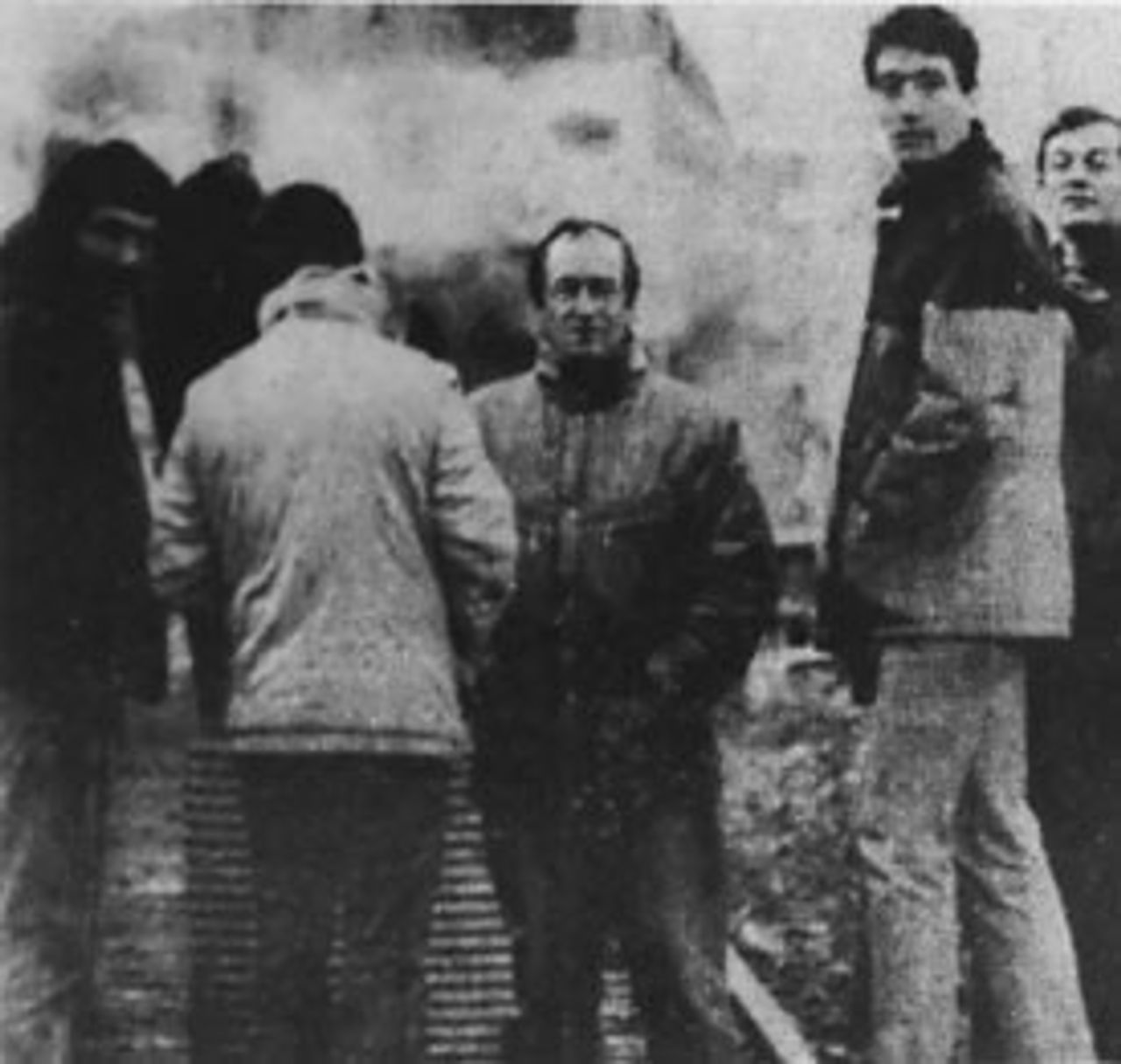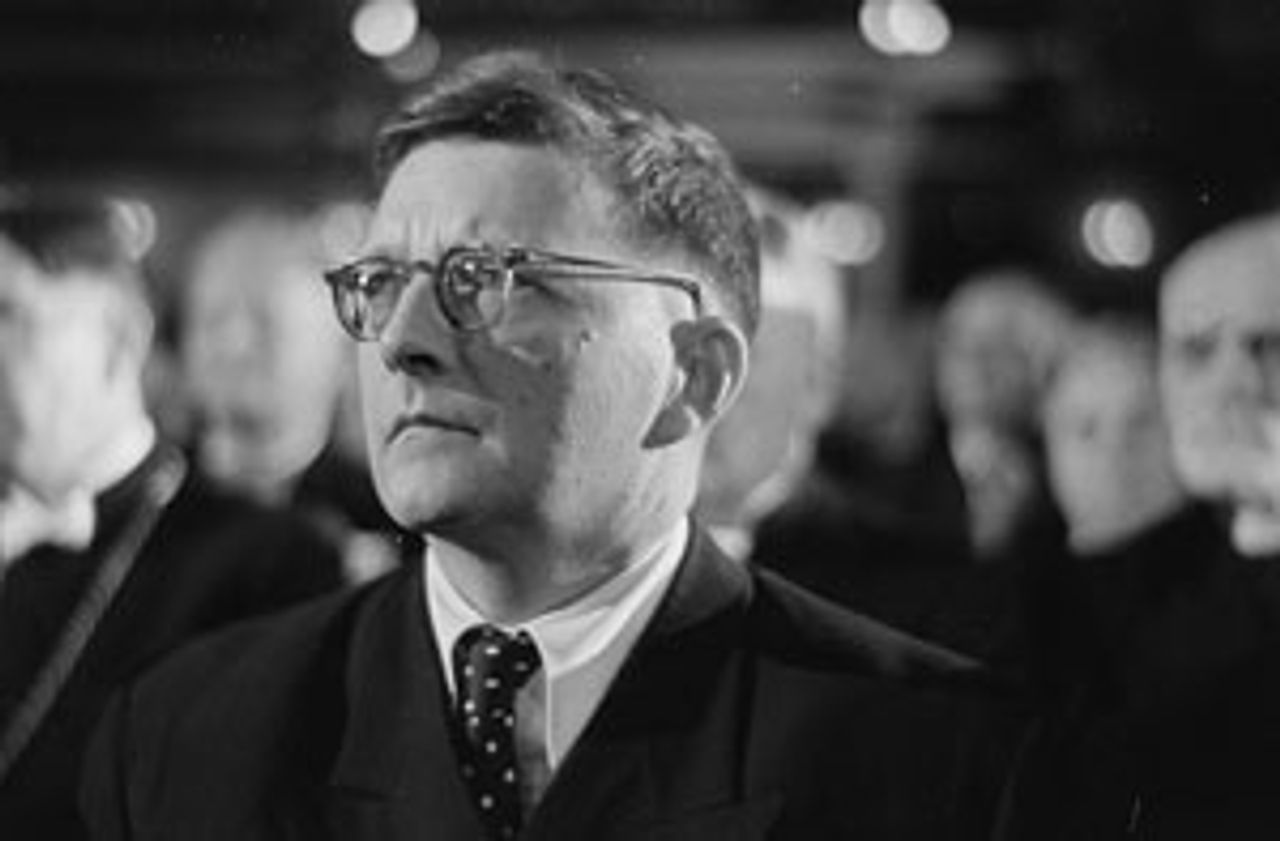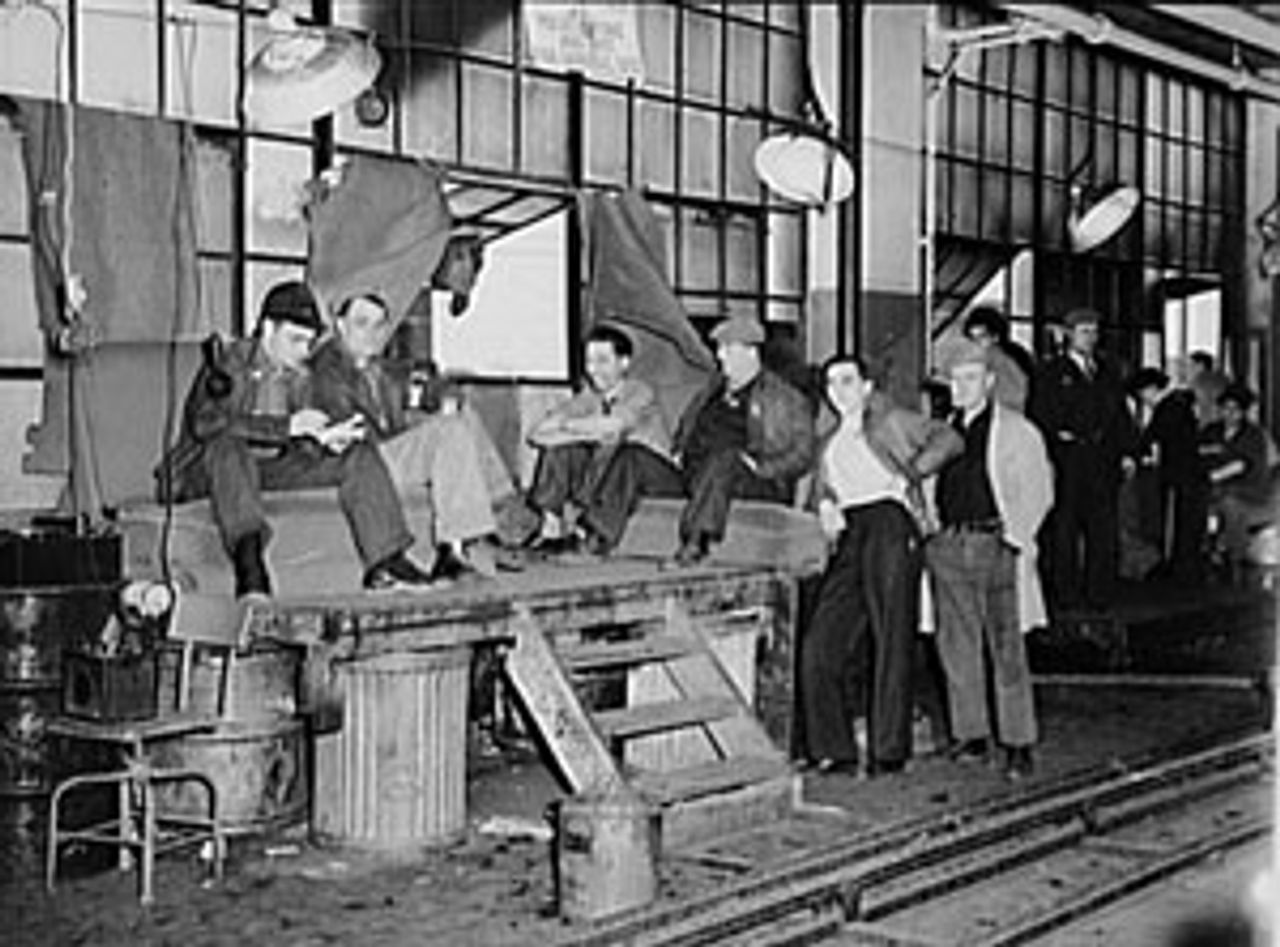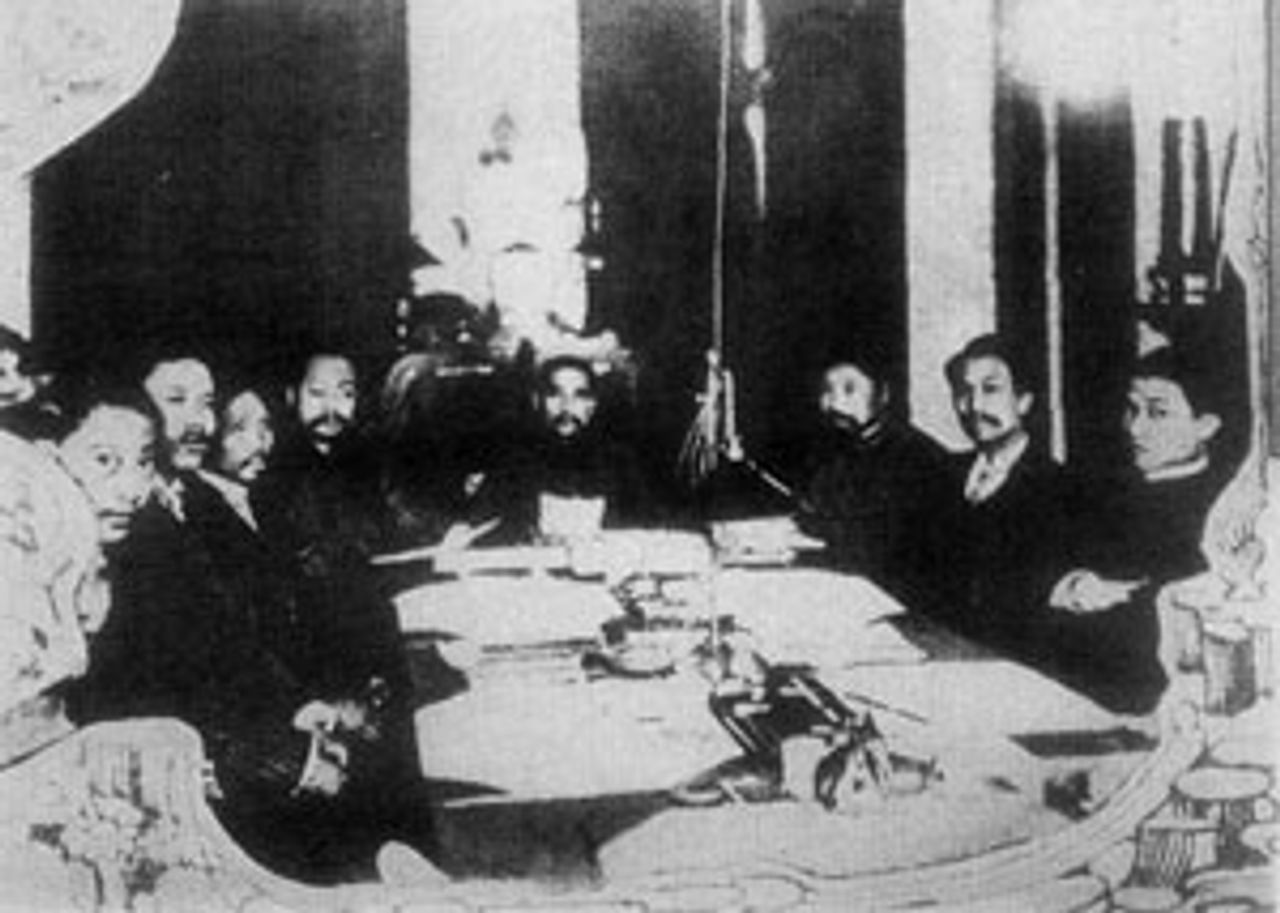This Week in History provides brief synopses of important historical events whose anniversaries fall this week.
25 Years Ago | 50 Years Ago | 75 Years Ago | 100 Years Ago
25 years ago: Rail workers’ walkout challenges French government
 French rail strikers block the tracks at the Paris
French rail strikers block the tracks at the ParisEastern Railway Station
Rail workers throughout France expanded a walkout which began on December 22, 1986. The strike was in opposition to a three percent cap on wage increases which was part of the austerity measures proposed by the Republic Party government of Jacques Chirac.
Strikers physically blocked the tracks at ten rail centers throughout the country. Chirac’s rightist government responded by sending riot police to forcibly remove strikers from the tracks at all locations.
France’s largest union, the Communist Party-dominated CGT, called for a widening of strike action in a series of new strikes by workers in the electrical and gas industries, Paris subways and suburban train networks as well as the docks and post offices.
Before the strike was betrayed by the CGT leadership, it became the longest rail strike in forty years and largest action by workers in France since May-June 1968.
The strike began as a wildcat by train drivers who rejected management’s demands that promotions be based on merit rather than seniority. As the strike expanded, the government offered a compromise on the merit plan, but strikers rejected the offer as “too little too late.”
The weeks preceding the strikes were marked by massive student demonstrations against a reactionary university reform bill which would increase tuition and restrict access to prestigious universities. Chirac was forced to withdraw the bill. One student died and over 200 injured in confrontations with police.
Right wing opponents of the Chirac government declared that the failure to defeat the student demonstrations and the subsequent workers struggles proved the failure of the power-sharing agreement between Chirac and Socialist Party President Francois Mitterand.
50 years ago: Shostakovich’s Fourth Symphony premiers
 Shostakovich in 1950
Shostakovich in 1950 Over 25 years after its composition, Dmitri Shostakovich’s Fourth Symphony finally premiered at the Moscow Conservatory on December 30, 1961. Considered one of his masterpieces, the work was an extraordinarily complex sonata form, heavily influenced by Gustav Mahler. The Fourth Symphony is performed in three movements and employs over 100 instruments.
Shostakovich had been forced to bury the Fourth Symphony in 1936 after his music became the target of attacks from the Soviet bureaucracy, spearheaded by Joseph Stalin himself. During its composition, an unsigned editorial appeared in Pravda deriding the composer’s Lady Macbeth of the Mtsensk District, which had won international acclaim, as “muddle, not music” and ominously threatening the composer that things could “end very badly.”
Stalin had himself attended Lady Macbeth and reputedly stormed out of the opera in disgust. Given the fate of revolutionists, intellectuals and artists—generations destroyed in Stalin’s purges—Shostakovich was extraordinarily lucky to have lived through the late 1930s.
He owed his survival to the production of works that won praise from the Stalinist bureaucracy, although he continued to be frequently criticized and suffered a second period of artistic banishment in the late 1940s. His persecution was ended by Soviet Premier Nikita Khrushchev, who succeeded Stalin after the latter’s death in 1953.
Shostakovich biographer Laurel E. Fay writes of the Fourth Symphony: “In hindsight, it seems incredible that anyone should have presumed the Symphony might find acceptance in Stalin’s Russia, just as the Great Terror was approaching its peak. Shostakovich’s Fourth Symphony is far too monumental and dazzling, far too extravagant and challenging to have satisfied officious Communist apparatchiks charged with enforcing repressive cultural policies. This is the "credo" not of a sincerely repentant, compliant vassal, but of a fiercely independent and enlightened modernist.”
75 years ago: Sit–down strikes by auto workers erupt in America
 Strikers guarding window entrance to Fisher body
Strikers guarding window entrance to Fisher bodyplant number three
On December 28, 1936, the United Automobile Workers (UAW) union called a sit-down strike at the General Motors (GM) car assembly plant in Cleveland Ohio.
Two days later, auto workers at the GM plant in Flint, Michigan began their own sit-down strike, barricading themselves into one of GM’s plants in the city. They struck for a national agreement on better pay and conditions and for recognition of the UAW as the workers’ bargaining unit.
Among the socialist militants in the leadership of the Flint strikers were supporters of the Trotskyist movement in the US, under the leadership of James Cannon.
By January 1, 1937, the strikes had spread to three more GM Fisher Body plants, causing serious delays in the production of Chevrolet motors and other vital components. GM’s car seat, aluminum and brass facilities were also affected.
In total, the new year opened with 35,000 workers on strike and 12 of GM’s 35 plants occupied or shut down by the workers. In addition to Cleveland and Flint, workers came out in Anderson and Norwood, Ohio and in Kansas City and Atlanta, Georgia.
The young UAW had learnt that only two of GM’s facilities produced the dies from which car components were stamped; one in Flint produced parts for Buicks, Pontiacs and Oldsmobiles, while the other in Cleveland produced parts for Chevrolet. The interdependence of many of GM’s divisions meant that even a short cessation of production could have serious knock-on effects. Rather than allow management to recruit scab labor and resume production, the workers occupied the factories.
The backbreaking nature of the vehicle production process and the brutality of the car manufacturers meant that unionisation in the auto industry became a life-and-death struggle for American workers. The class struggle in the United States would be bloodier than anywhere else in the world. At the time of the Flint sit-down strike, the militancy of the US working class at a high pitch, after years of Depression punctuated by general strikes in 1934 in Minneapolis, San Francisco and Toledo, Ohio.
The small but growing UAW was affiliated to the newly founded Congress of Industrial Organisations (CIO), which arose from a split with the older American Federation of Labor (AFL) by union officials who opposed the latter’s craft unionism and favored the organization of basic industry along industrial, rather than craft, lines.
GM’s production process was much more geographically dispersed than that of its main rival, Ford. The latter’s Rouge plant in Dearborn, Michigan had its own steel mill and glass factory.
GM also relied on sub-contractors—local engineering and steel firms that produced various elements of the production process. This industrial disaggregation meant that GM was more susceptible to production being stopped by workers at one of its key facilities.
100 years ago: Republic of China established
 The inauguration of Sun Yat-Sen as the first president
The inauguration of Sun Yat-Sen as the first presidentof the Republic of China in its capital, Nanking
On January 1, 1912, the Republic of China was proclaimed, with its capital in Nanking and the nationalist leader Sun Yat-Sen its provisional president.
The proclamation of the republic formally ended the rule of the Manchu dynasty, which had governed China for over 250 years. A local uprising of soldiers in Wuchang that began on October 10 had sparked upheavals throughout China, with the republican forces gaining control of roughly two-thirds of the country within a month and a half.
Violent clashes between nationalist troops and loyalist forces continued over the next two months, including setbacks for the former. Moreover, the nationalist movement, which oriented to dissident sections of the state bureaucracy and the propertied classes, was incapable of mobilising the urban and rural masses by appealing to their social grievances.
The victory of the republic was virtually guaranteed by the crisis of the Manchu dynasty, which was on the verge of bankruptcy and was opposed by broad layers of the population. The dynasty had been widely viewed as a corrupt instrument of the major powers and was particularly reviled for its suppression, with the aid of foreign troops, of the Boxer Rebellion in 1900. The nascent Chinese bourgeoisie and sections of the state bureaucracy and military were increasingly hostile to the dynasty for its defence of foreign interests.
Sun had been in the US when the Wuchang uprising began and responded to the upheaval by travelling to Europe to lobby for support from the British and French governments. The government that he led was a product of negotiations between nationalist forces, representatives of the major powers, and the dynasty. The new government left the state bureaucracy in place, preventing any genuine land reform or progressive social measures.
In order to end the revolution, Sun reached a compromise with the old ruling elites and handed the presidency a few months later to Yuan Shikai, a former prime minister who had commanded Manchu troops against the nationalists.
